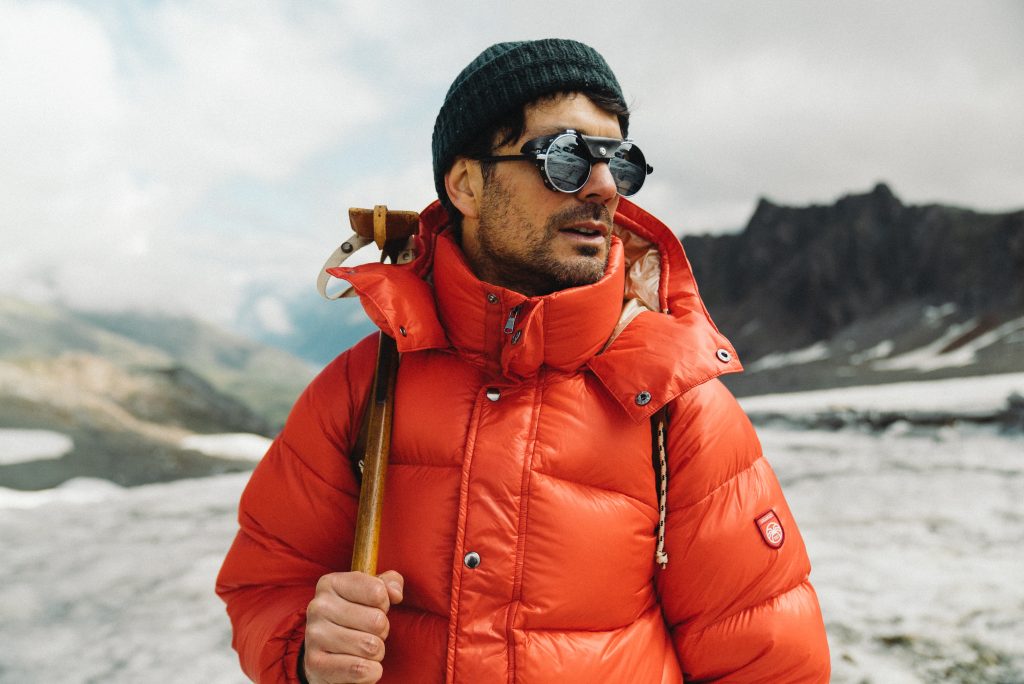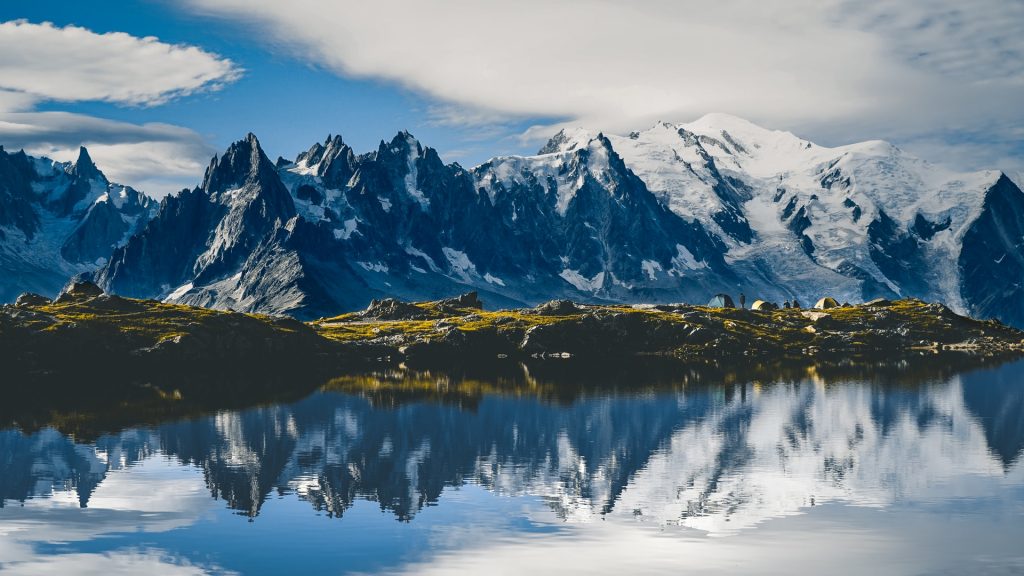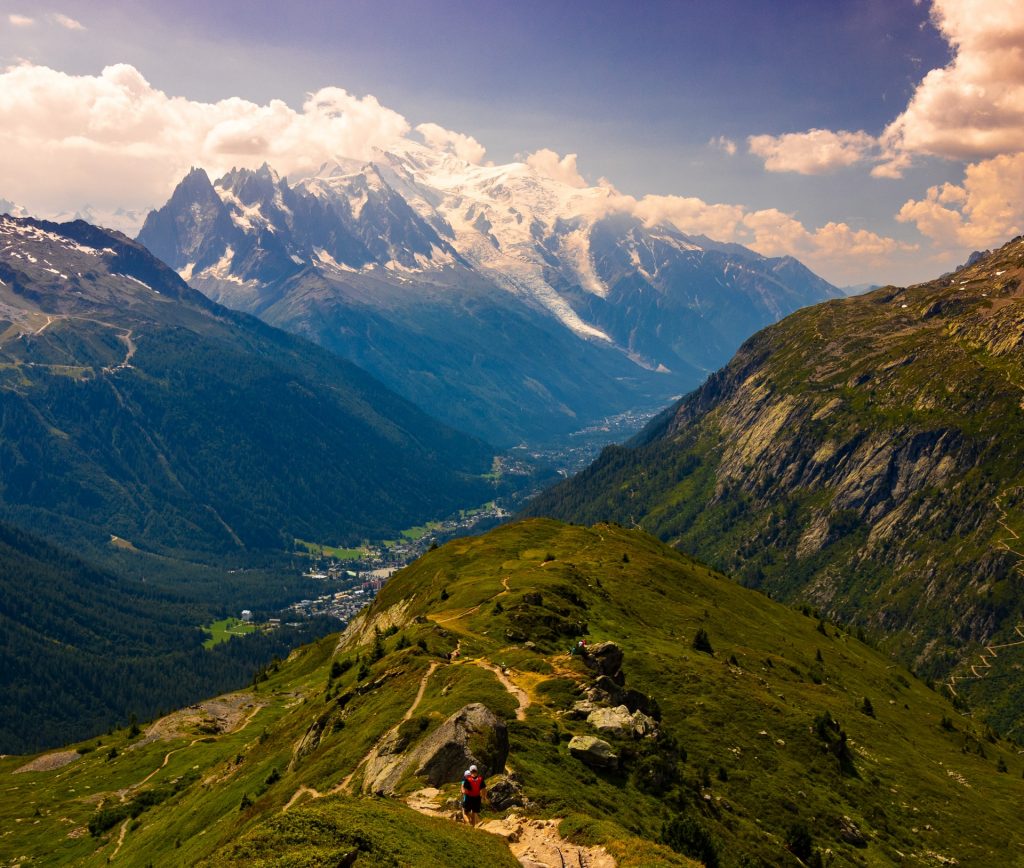
EXPEDITION TO MONT BLANC - WHAT EQUIPMENT DO YOU NEED?
The picturesque summit of Mont Blanc attracts groups of mountain climbing enthusiasts every year, eager to repeat the feat of the first conquerors of the White Mountain - Jacques Balmat and Michel Paccard. Although over 230 years have passed since that memorable event, the expedition to Mont Blanc is still a solid test of mental strength, physical preparation, and equipment. In today's post, we will focus on the equipment. Check out what you must take with you if you plan to climb the highest peak in the Alps.
WHAT WILL YOU LEARN FROM THIS POST?
- Expedition to Mont Blanc - what clothing should you take?
- What boots are suitable for such a demanding route?
- What camping equipment should you choose?
- What other accessories and tools are essential during an expedition to Mont Blanc?
IN SUMMARY
An expedition to Mont Blanc is an adventure that is definitely worth experiencing. However, to enjoy the beautiful views from the summit of the White Mountain, you must overcome a challenging journey. It is necessary to have professional equipment such as high-altitude clothing (including a warm down jacket), camping gear, climbing equipment, and, most importantly, sturdy and well-insulated boots. Additionally, something that cannot be bought - common sense - is essential.
EXPEDITION TO MONT BLANC - CLOTHING
Experienced climbers unanimously repeat that the most optimal ways to reach the summit (which doesn't mean they are easy!) are the routes through the Gouter ridge or through the Grands Mulets refuge. Both are marked as PD in the alpine difficulty scale, with the first route recommended for the summer season and the second for winter (due to crevices forming on the glacier in summer). Regardless of which route you choose, you must be properly dressed above all. The expedition to Mont Blanc involves a mix of variable weather conditions, unexpected weather changes, and severe cold near the summit. There have been cases of climbers getting lost in the clouds at higher altitudes and even deaths from hypothermia. There's no room for jokes here - appropriate high-altitude clothing can literally save your life in situations you won't even be able to predict.

DOWN JACKET - THE BEST JACKET FOR MOUNTAINEERING EXPEDITIONS
When embarking on a demanding adventure like a Mont Blanc expedition, the perfect solution is a warm down jacket with natural insulation. Natural down provides excellent protection against wind and cold - no synthetic alternatives can match its thermal properties. It is also incredibly lightweight, so you won't even feel like you're wearing a down jacket. We especially recommend the Heritage model, a special-purpose down jacket: it features goose down filling, a high loft rating of 750 cuin, and a deep, adjustable hood that provides exceptional thermal comfort and insulation against the cold. The removal of internal partitions has further reduced the weight of the down jacket, and additional features like the two-way zipper (allowing for bottom-up opening) and numerous external and internal pockets enhance overall convenience. We can confidently say that the Heritage down jacket will perform even in the most extreme conditions.
WHAT ELSE BESIDES THE JACKET?
A down jacket is the most important clothing layer, but for obvious reasons, it's not the only one. What else should you have with you during a Mont Blanc expedition?
- First clothing layer - thermal underwear, such as a merino wool shirt and leggings set.
- Second clothing layer - thermal clothing.
- Third clothing layer - a hardshell jacket with waterproof and windproof properties.
- Insulated softshell pants - it's also worth having additional pants with a membrane in case of worsening weather conditions. Look for models with full-length leg zippers so you can put them on without removing your boots.
- Thermal trekking gaiters - preferably 2 pairs, including one for the summit attack.
- A warm hat - for the Mont Blanc expedition, two types of hats will be useful: a thicker, warmer and less breathable one for higher parts of the mountain, and a model that protects from the sun for lower parts (a scarf can be used as an alternative).
- Gloves - preferably 2-3 pairs. Lightweight fleece gloves will suffice for most of the expedition, but during the final ascent, it's worth having insulated down mittens on hand. In certain sections of the route, you may encounter places with steel cables - in this case, you can use a third pair of gloves that you don't mind damaging and that won't wear out quickly (e.g., leather gloves).
- A set of less "armored" clothing - for the time spent at the base or in the refuge (e.g., leggings + breathable shirts).
- Gaiters - calf protectors that prevent snow from getting inside your boots or water from seeping in.
- Sunglasses - preferably professional glacier glasses with side shields that protect your eyes from the sun, including the reflection off the snow. Category 400 lenses are an absolute must-have.
WHAT FOOTWEAR FOR A MONT BLANC EXPEDITION?
Climbing to the highest peak in the Alps is a challenge for footwear as well. For Mont Blanc, C-type high-altitude mountaineering boots (designed for snow, ice, and rocks) are suitable, preferably ones that allow for crampon attachment. Look for models with a rigid upper that provides good insulation against the cold. Also, make sure to choose the right size - the boots should comfortably accommodate your foot with thick socks.
Some climbing enthusiasts, planning a one-time ascent to a 4-5 thousand meters high peak, choose to bring all-season trekking boots. The same applies to the Mont Blanc expedition. It's not a serious mistake because if they are sturdy boots with adequate insulation and the ability to attach crampons, they should pass the test. However, if you value the highest level of safety and comfort (including psychological comfort), you should invest in the mentioned high-altitude mountaineering footwear.

CAMPING EQUIPMENT. WHAT SLEEPING BAG FOR THE EXPEDITION?
When preparing for a Mont Blanc expedition, you mustn't forget about camping equipment, including a tent, sleeping pad, and sleeping bag. However, you must be careful where you set up your camp - in recent years, strict restrictions on wild camping have been introduced, and violating them can result in fines of up to 6000 euros. However, on some routes (e.g., 3M), you may come across places that are informally tolerated for camping, as long as you pitch your tent for no longer than one night.
Which tent should you take with you? It depends on the number of people participating in the expedition, of course. However, the general rule is that the tent should not be too heavy as it will noticeably make the journey more difficult and longer. On higher altitudes, resistance to strong wind gusts is also useful. As for the sleeping pad, focus on self-inflating models, preferably 3-season ones with a thickness of 2.5-3.5 cm.
When it comes to the sleeping bag for the expedition, we highly recommend a down sleeping bag. Thanks to the natural down insulation, it is incredibly lightweight and compressible, taking up minimal space in your backpack. Most importantly, it offers excellent thermal properties. For the Mont Blanc expedition, down sleeping bags from the Radical series (with 900 cuin goose down filling) or Core series (700 cuin, compression from 4 to 10 liters depending on the model) will be suitable. They provide significantly higher comfort temperature than the recommended -10 to -15°C for Mont Blanc!
OTHER EQUIPMENT AND ACCESSORIES
-
- Backpack - preferably x2. For the summit push, a backpack with a capacity of 20-30 liters will be useful. Additionally, you need to invest in a sturdy mountaineering backpack with a capacity of 60-70 liters (it's good if it comes with a rain cover).
- Climbing gear - ice axe, crampons, helmet, 30-50-meter dynamic rope, harness, personal gear.
- Trekking poles - for additional support during approaches at lower altitudes, while on higher altitudes, a combination of poles and ice axe can be used.
- Headlamp - essential since the ascent to Mont Blanc usually begins at night.
- First aid kit - bandages, gauze, first aid equipment.
MONT BLANC EXPEDITION - EQUIPMENT IS NOT EVERYTHING
Remember that even top-quality gear does not guarantee success if you lack practical knowledge and experience. Although Mont Blanc is not considered very demanding in terms of topography, it should not be underestimated. Without acclimatization skills, efficient movement in challenging mountain terrain, and at least basic knowledge of belaying and using climbing equipment, the chances of reaching the summit are small. Therefore, a common-sense approach and the ability to say "STOP" when necessary are crucial.
If you are looking for professional mountaineering gear, don't forget to visit pajaksport.pl. You will find the best jackets and down sleeping bags that will perform well in the most extreme conditions - even on the highest peak of the Alps.
Photo credits: pajaksport.pl, unsplash.com
